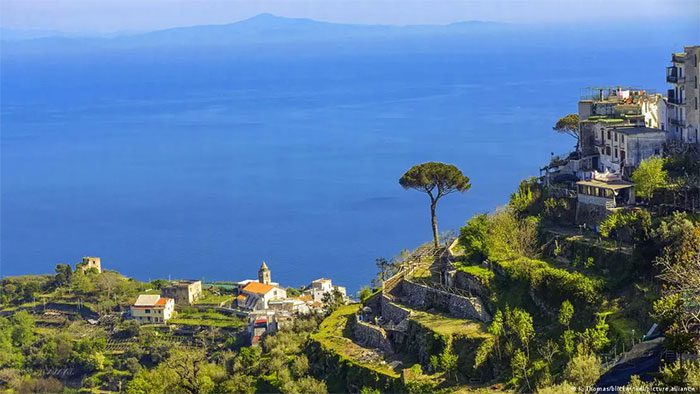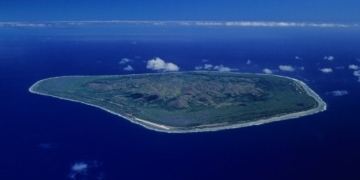Travel is not a modern invention. Since ancient Roman times, the people of Rome traveled to wellness resorts in Greece, visited the pyramids in Egypt, or enjoyed festivities on the Bay of Naples. Souvenirs also emerged from this period.
Enjoyable Vacations

To this day, the Bay of Naples remains a popular tourist destination. (Photo: DW).
The wealthy Roman nobleman Gaius Antonius would often relax on the terrace of his magnificent villa overlooking the sea at the Bay of Naples. His slaves would serve him wine and delicacies. Just days earlier, Antonius had escaped the July heat of Rome to come to this luxurious and comfortable haven.
He would invite friends to spend the summer with him. In the evenings, they would relax in the hot spring complexes in the town of Baiae on the Bay of Naples. Such vacations were very popular among the Roman elite.
The Bay of Naples was a favored retreat for Romans, with the upper class residing in seaside villas and mountain estates. The poet Horace once praised: “No bay in the world can compare with beautiful Baiae.”

Romans on their retreats sometimes wore health sandals made of glass filled with perfume to pamper their feet. (Photo: DW)
Unlike today, the ancient Romans enjoyed strolling on the beach but were primarily interested in the healing hot springs within the natural bath complexes. Those who could afford it built the foundations of their natural bath complexes directly into the sea, allowing for safe swimming in pleasant temperatures, surrounded by ocean waves. For the Roman philosopher Seneca, this was a stark representation of Roman decadence.
Baiae was not just a seaside resort but also notorious for its visitors who indulged in hedonistic parties to the extent that philosopher Seneca once again found reason to complain: “Why must I witness drunken people staggering along the shore and endure the noise from raucous parties on sailing boats?”
The historian Gaius Plinius Caecilius Secundus (61-112 AD) recounted that there were pleasure boats on the sea, where people would gather in the evenings to enjoy lavish dinners featuring oysters. Less wealthy Romans often visited the Bay, Tibur (now Tivoli, Italy), Antium (now Anzio, Italy), and Baiae (now submerged beneath the sea).
Long-Distance Travel

The Pyramid of Khufu at Giza, Egypt. (Photo: THX/TTXVN).
At that time, travelers were often prepared for relatively safe long journeys to tourist destinations within the vast Roman Empire. Furthermore, Latin was spoken everywhere. The roads, originally built for the Roman army, remained in good condition and people could walk or travel by chariot. In good physical shape, one could walk about 30 kilometers a day or travel 80 kilometers by chariot, and even further on horseback.
There were also inns along the way providing food. Many Roman travelers would spend the night at the rural estates of local families. Those opting for sea routes could travel by merchant ships for a fee.
Egypt was a popular destination, with the Pyramids of Giza, the Sphinx, and the Lighthouse of Alexandria attracting many tourists. However, travelers also followed in the footsteps of the poet Homer through Troy or flocked to sites of famous battles such as Marathon, where the Greeks defeated the Persian army in 490 BC.
On the other hand, the ancient temples of Greece were quite appealing to Roman tourists. The Greek author Pausanias (110-180 AD) even wrote one of the first “travel guides” about the attractions of his homeland.
Wherever travelers went, locals saw opportunities for profit. Thus, even back then, there were various types of souvenirs available for purchase, from miniature pyramids to silver statues to clay jars painted with the Lighthouse of Alexandria.


















































